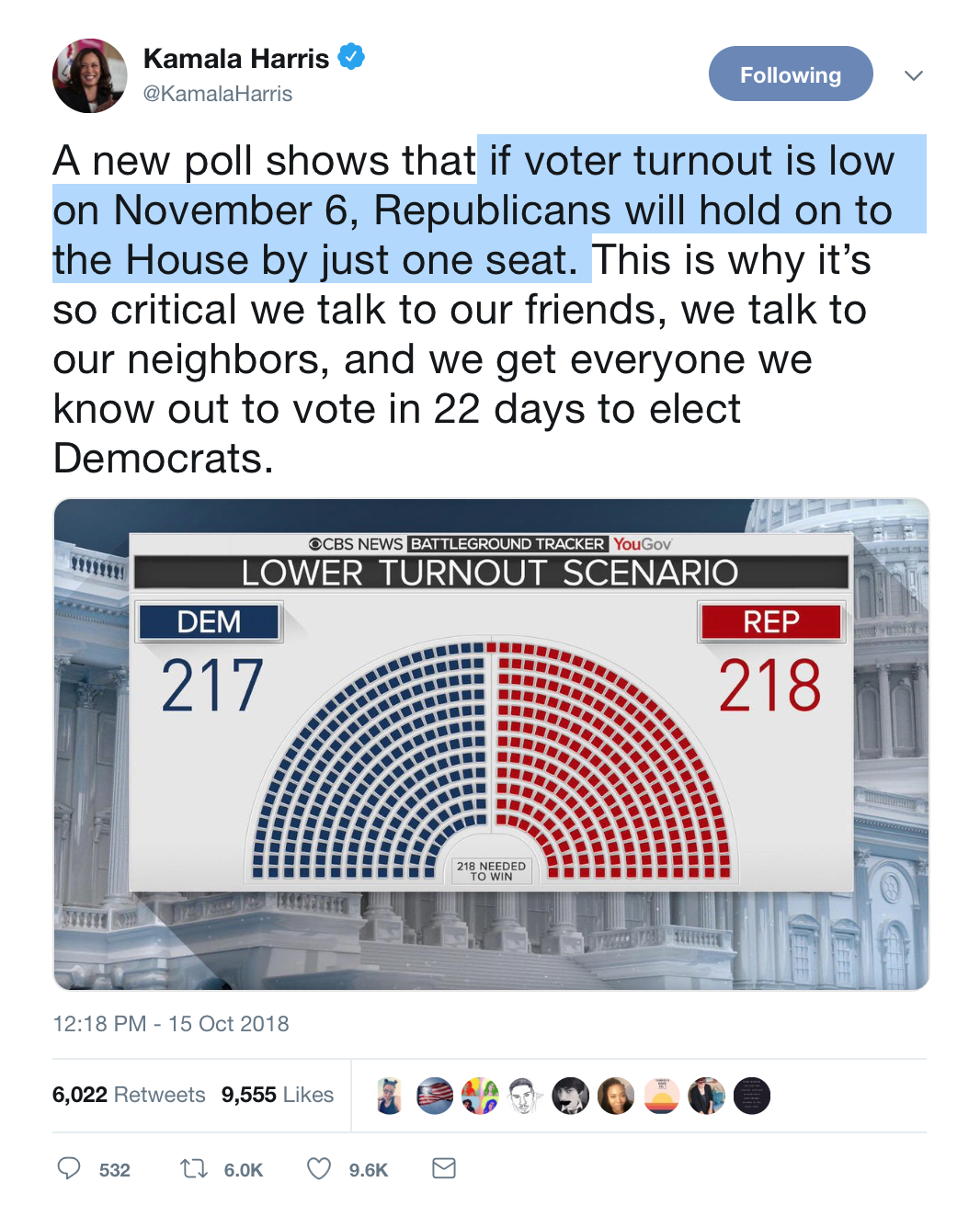:ALERTRED::ALERTRED::ALERTRED:

'A very different world' - inside the Czech spying operation on Trump

'A very different world' - inside the Czech spying operation on Trump
'A very different world' - inside the Czech spying operation on Trump
Luke HardingMon 29 Oct 2018 06.00 GMT
Exclusive: files reveal Trump was the target of an extensive spying operation in the late 1980s by the country’s intelligence service, with ‘friends’ from the KGB
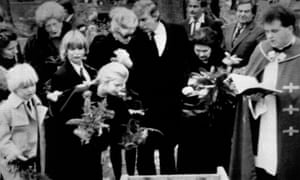
Donald and Ivana Trump during the funeral of her father, Miloš Zelníček, in 1990 in Zlín. Photograph: AP
The three visitors from the eastern bloc looked somewhat incongruous as they stood in front of Trump Tower. It was September 1989. Leading the delegation was František Čuba, a bulky and bespectacled figure, the chairman of Czechoslovakia’s showcase model farm. With him were his deputy Miroslav Kovařík and the farm’s communist party boss, Pavel Čmolík.
The trio walked into the gleaming lobby and took the lift up to the executive floor. Their meeting was with Donald J Trump. For the men from behind the Iron Curtain, Trump was a celebrity capitalist. He was also, we now know, the target of an extensive spying operation conducted by Czechoslovakia’s Státní bezpečnost (StB) intelligence service – together with “friends” from the KGB.
The StB had been interested in Trump since 1977, when he married a Czechoslovak-born woman, Ivana Zelníčková. News of the wedding reached the StB bureau in Zlín, the town in Moravia where Ivana grew up and where her parents lived. Ivana’s father Miloš regularly gave the StB information on his daughter’s visits from the US and his son-in-law’s burgeoning career.
The StB’s work on Donald and Ivana intensified in the late 1980s, after Trump let it be known he was thinking of running for president. The StB’s first foreign department sat up. Inside the Soviet bloc, Czechoslovakia’s spies were reputed to be skilled professionals, competent and versatile English-speakers who were a match for the CIA and MI6.
Čuba was on a 14-day business trip to Brazil, the US and Canada. Trump, who had recently launched his Trump Shuttle, appears to have told his guests to buy a Sikorski helicopter, possibly from him and used by his airline for short hops. Čuba invited Trump to visit the farm, Slušovice. Trump reportedly agreed.
We know this because of a two-page write-up of the encounter based on details supplied by agent Jarda. Jarda was one of four StB collaborators who spied on the Trumps during the cold war. Jarda’s real name was Jaroslav Jansa. It’s unclear if Jansa was present in New York, or learned of the visit once the official delegation flew home.
Now aged 74, and living in an apartment bloc on the outskirts of Prague, Jansa is reluctant to talk about his past. When the Guardian and the Czech magazine Respektknocked on his door, he refused to open it. In an email, he said he was tired and wanted to be left in peace. He added: “You are trying to put me in the tomb.”
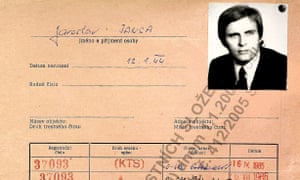
The StB security file of Jaroslav Jansa who spied on Donald Trump in 1980’s while he was married to Ivana. Photograph: StB
‘A very different world’
Jansa’s shadow career began in summer 1986, when he met an StB officer in the town of Vsetín, files reveal. After a meal in the box-like Vsacan hotel, Jansa agreed to become a secret collaborator. Regular meetings followed. They were noted in an agent file. He got modest amounts of cash – on one occasion, 29 crowns ($5-$7).
Jansa was one of tens of thousands of informers in the ČSSR, the Czechoslovak Socialist Republic. He spoke five languages, had a scientific background and was head of foreign cooperation at Slušovice. This meant he came into contact with prestige visitors including congressional delegations from Washington and foreign TV crews.
The StB’s records are a window into a vanished age. As well as Trump, Jansa spied on an American diplomat based at the embassy in Vienna, James Freckmann. Jansa drove regularly to west Germany and Heidelberg. His handlers told him to befriend Americans and to look out for US military convoys. If challenged, he was to deny he was a spy.
Jansa set out to make western contacts, and came back with business cards. One of them belonged to an American graduate researcher, Gary Geipel, who was writing a thesis on communist east Germany’s technology policy. He thinks he may have met Jansa in 1987 or 1988 during a visit to the Leipzig trade fair.
“It was a very different world. It’s hard to imagine the level of mutual distrust that existed,” Geipel said. “The assumption was that any American interested in IT was working for the CIA.” After the fall of the Berlin Wall, Geipel discovered the Stasi had spied on him too – and had visited his relatives in east Germany, bringing flowers.
He added: “Trump was married to someone of Czech origin. He was a prominent figure in an adversary society. It would be natural for them to have contact with him. I went to graduate school in Columbia. You could not be unaware of Donald Trump in 1980s New York.”
Jansa’s New York report was added to a bulging Trump file. It joined earlier secret documents, some of them recording little more than family gossip. In November 1979 Ivana Trump went back to Czechoslovakia, bringing her two-year-old son, Donald Jr, with her. Her parents, Miloš and Marie Zelníček, picked her up at Prague airport.
The StB discovered that Ivana was no longer a model and was now “helping her husband in his business activities” – designing the interiors of Trump-financed buildings. Donald Jr had two nannies – one American, one Swiss – and had recently fractured his leg. And: “Her husband is connected to the election campaign of the current US president [Jimmy] Carter”.
The StB’s source was Ivana’s father. The note, typed up by Lt Josef Knopp, said the agency would give Mrs Trump “operational attention” during her stay in Zlín. Intriguingly, it was copied to the 23rd section of the first directorate in Prague, which was responsible for running “illegals”, or deep-cover agents abroad. Its most famous asset, Karl Koecher, was embedded inside the CIA.




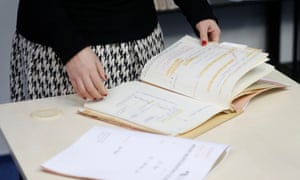
Secret police files on Ivana Trump at the Security Service Archive in Prague, Czech Republic. Photograph: Petr David Josek/AP
Eight years later, Miloš Zelníček was still briefing the StB, though by now Trump was a person of major interest. When Ivana visited in October 1988, Zelníček passed on her tip that George HW Bush would win November’s presidential election. He did, leading the StB to “deepen” its activity and to try and exploit Trump’s proximity to the “highest echelons of US power”.
It’s unclear to what degree the KGB and StB shared or coordinated Trump material. The two spy agencies worked closely together, signing cooperation agreements in 1972 and October 1986. The KGB was always the dominant partner – it would have closely monitored Trump when he and Ivana visited the USSR in summer 1987, following a Kremlin invitation.
According to Kieran Williams, a professor of political science at Drake University, the StB’s chief concern was with dissidents and emigres living in the west. It was keen to “shut up enemies” including journalists working for Radio Free Europe. It also wanted to stop the flow into Czechoslovakia of samizdat and tamizdat – literature banned by the state.
“Ivana was unusual in that she had achieved a status in US society. You therefore try and get information on her,” Williams said. “But she was never politically active and I don’t think there was a long-term goal here. It was purely opportunistic. I don’t think there was any strategy to compromise Trump. If anyone was going to do this it would be the Soviets.”
Williams said the StB’s first directorate – like its elite KGB counterpart – was highly trained and competitive. Its attention to Trump post-1988 was signifiant.
“There was more buzz about Trump’s political ambitions after the election,” he said, adding that the first directorate’s involvement was “a big step-up”.
“They were looking at a long-term operation,” he said.
This was curtailed, however, by the dramatic and sudden collapse of the communist bloc. This happened in November 1989, soon after the Slušovice representatives met Trump on Fifth Avenue. Their plan to forge relationships with “large capitalist firms” fell into history’s dustbin. The StB kept the identities of its informants secret by burning many files.
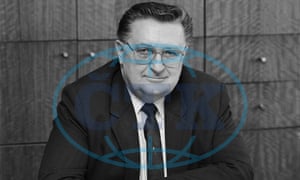
František Čuba, the the chairman of Czechoslovakia’s showcase model farm, met with Trump in Trump Tower in 1989. Photograph: Respekt Magazine
‘A forceful personality’
Trump eventually made it to Slušovice. According to Čuba, the collective farm sent its small twin-engine plane to collect the Trump family from Prague airport and to take them to Zlín. The event, in November 1990, was a sad one: the funeral of Ivana’s father. One of the mourners was Jansa, the secret collaborator, who stood 100 metres away from the Trumps.
During the same trip, Čuba says, he showed Trump his collective’s biotech and electronic operations. By this point the farm – given unprecedented entrepreneurial freedom in communist times – was bereft of purpose. “He was a forceful personality,” Čuba said of Trump. Čuba’s colleagues Kovařík and Čmolík are both dead, one murdered, the other killed in the 1990s in a car accident.
None of the StB intelligence officers who spied on the Trumps for more than a decade appear to have suffered much in the transition to democracy. Vlastimil Daněk – the local Gottwaldov StB chief – was known as a hardliner who jailed and persecuted dissidents. He now lives peacefully in retirement, in a pleasant house with a front garden and a satellite dish.
“It’s the past. I would like to forget,” he said.
Last edited:
